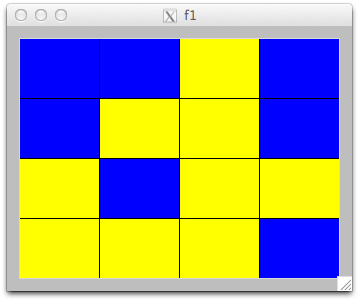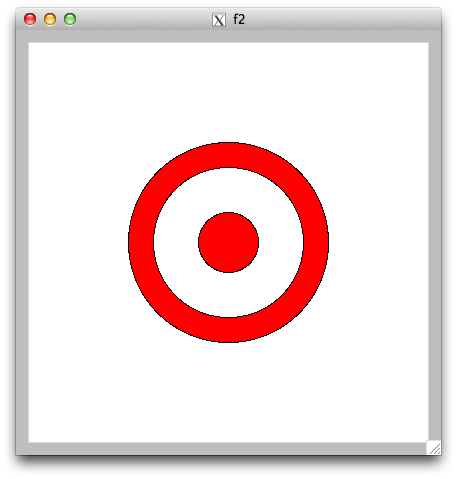Lab Exam 2 Practice Problems
The problems are not in order of difficulty. If you get stuck on a problem, try the next one.
Recursion
-
Write a function
f1(list)that returns the sum of the elements in the list.>>> f1([1,2,3,4]) 10 >>> f1([]) 0
def f1(list): if list == []: return 0 return list[0] + f1(list[1:]) Consider the following function:
\( f(n) = \begin{cases} n//2 & \text{if n is even} \\ 3n+1 & \text{if n is odd} \\ \end{cases} \)
Write a functionf2(n)that returns the number of steps of the function \(f(n)\) until it reaches 1 (this is also known as the Collatz Conjecture). For example, consider \(f(6): 6 \rightarrow 3 \rightarrow 10 \rightarrow 5 \rightarrow 16 \rightarrow 8 \rightarrow 4 \rightarrow 2 \rightarrow 1\), since there are a total of 9 steps,f2(6)evaluates to 9.>>> f2(1) 1 >>> f2(6) 9 >>> f2(11) 15 >>> f2(637228127) 276
def f2(n): if n == 1: return 1 if n % 2 == 0: return 1 + f2(n//2) else: return 1 + f2(3*n+1)-
Write a function
f3(list)that prints out the elements in the list in reverse order.>>> f3([1,2,3]) 3 2 1 >>> f3([]) >>> f3([3,2,1]) 1 2 3
def f3(list): if list == []: return f3(list[1:]) print(list[0]) -
Write a function
f4(list)that multiplies all of the odd elements in the list by 3 and prints out each tripled element.>>> f4([1,2,3,4]) 3 9 >>> f4([2,4]) >>> f4([11,42,63,15]) 33 189 45
def f4(list): if list == []: return if list[0] % 2 == 1: print(3*list[0]) f4(list[1:]) -
Write a function
f5(list)that multiplies all of the odd elements in the list by 3 and prints out each element of the modified list in reverse order.>>> f5([1,2,3,4]) 4 9 2 3 >>> f5([2,4]) 4 2 >>> f5([11,42,64,15]) 45 64 42 33
def f5(list): if list == []: return f5(list[1:]) if list[0] % 2 == 1: print(3*list[0]) else: print(list[0]) -
Write a function
f6(lst)that takes any multidimensional list and returns a one dimensional list with the same values. This is also known as flattening a list. Remember that you can usetype([1,2,3]) == listto determine if something is a list. There should be one base case and two recursive cases.>>> f6(['baa']) ['baa'] >>> f6(['baa', [4, True, [10, 5], [1, 2, ['moo']]], ["chirp"]]) ['baa', 4, True, 10, 5, 1, 2, 'moo', "chirp"] >>> f6([]) [] >>> f6([[[[[[[[[[[[[[23]]]]]]]]]]]]]]) [23]
def f6(lst): if type(lst) != list or lst == []: return lst elif type(lst[0]) != list: return [lst[0]] + f6(lst[1:]) else: return f6(lst[0]) + f6(lst[1:]) -
Consider a function \(L_n\):
\( L_n = \begin{cases} 2 & \text{if } n = 0; \\ 1 & \text{if } n = 1; \\ L_{n-1}+L_{n-2} & \text{if } n > 1; \\ \end{cases} \)
Write a functionf7(n)that calculates \(L_n\)>>> f7(3) 4 >>> f7(14) 843 >>> f7(0) 2 >>> f7(22) 39603
def f7(n): if n == 0: return 2 if n == 1: return 1 return f7(n-1) + f7(n-2) -
Write a function
f8(s)that returnsTrueifsis a palindrome, andFalseotherwise.>>> f8("") True >>> f8("kayak") True >>> f8("penguin") False >>> f8("a") Truedef f8(s): if s == "": return True if s[0] == s[-1]: return f8(s[1:-1]) return False -
Write a function
f9(n)that returns \(n!\)>>> f9(0) 1 >>> f9(1) 1 >>> f9(2) 2 >>> f9(3) 6
def f9(n): if n == 0: return 1 return n * f9(n-1) -
Write a function
f10(list)that returnslen(list).>>> f10([1,2,3]) 3 >>> f10([]) 0 >>> f10([2]) 1
def f10(list): if list == []: return 0 return 1 + f10(list[1:]) -
Write a function
f11(list)that returns the last element in the list.>>> f11([1,2,3]) 3 >>> f11([]) >>> f11([1]) 1
def f11(list): if list == []: return None if len(list) == 1: return list[0] return f11(list[1:]) -
Write a function
f12(n)that prints the numbersnthrough 1 in descending order.>>> f12(3) 3 2 1 >>> f12(0) >>> f12(1) 1
def f12(n): if n > 0: print(n) f12(n-1) -
Write a function
f13(n)that returns the number of digits inn. You may assumenis a positive integer.>>> f13(9175) 4 >>> f13(34) 2 >>> f13(268) 3 >>> f13(0) 1
def f13(n): if n < 10: return 1 return 1 + f13(n//10) -
Write a function
f14(list)that returns the first odd number in the list, andNoneif there are no odd numbers in the list.>>> f14([1,2,3]) 1 >>> f14([2,4]) >>> f14([2,4,6,8,10,3]) 3
def f14(list): if list == []: return None if list[0] % 2 == 1: return list[0] return f14(list[1:]) -
Write a function
f15(list)that returns the sum of all the odd numbers in the list.>>> f15([1,2,3]) 4 >>> f15([2,4]) 0 >>> f15([1,3,6,9]) 13
def f15(list): if list == []: return 0 if list[0] % 2 == 1: return list[0] + f15(list[1:]) return f15(list[1:]) -
Write a function
f16(list)that returns a list of all the odd numbers in the list.>>> f16([1,3,5,7]) [1, 3, 5, 7] >>> f16([2,4]) [] >>> f16([1,2,3,4,5]) [1, 3, 5]
def f16(list): if list == []: return [] if list[0] % 2 == 1: return [list[0]] + f16(list[1:]) return f16(list[1:]) -
Write a function
f17(list)that returns the second to last element in the list. Assumelen(list) > 1.>>> f17([1,2]) 1 >>> f17([1,2,3,4]) 3 >>> f17([1,2,3]) 2
def f17(list): if len(list) == 2: return list[0] return f17(list[1:]) -
Write a function
f18(a,b)that returns the greatest common divisor ofaandb.>>> f18(5,4) 1 >>> f18(40,60) 20 >>> f18(9,3) 3
def f18(a,b): if b == 0: return a return f18(b, a%b) -
Write a function
f19(list1, list2)that mergeslist1andlist2in ascending order. Assumelist1andlist2are already sorted.>>> f19([1,2,3],[4,5]) [1, 2, 3, 4, 5] >>> f19([4,5],[1,2,3]) [1, 2, 3, 4, 5] >>> f19([],[1,2,3]) [1, 2, 3] >>> f19([1,2,3],[]) [1, 2, 3] >>> f19([], []) []
def f19(list1, list2): if list1 == []: return list2 if list2 == []: return list1 if list1[0] < list2[0]: return [list1[0]] + f19(list1[1:], list2) return [list2[0]] + f19(list1, list2[1:]) -
Write a function
f20(list)that mergesorts the list. Consider usingf19(list1, list2)for the merging step.>>> f20([3,2,1]) [1, 2, 3] >>> f20([]) [] >>> f20([5,3,1,2,4,6]) [1, 2, 3, 4, 5, 6]
def f20(list): if len(list) <= 1: return list else: mid = len(list)//2 list1 = f20(list[:mid]) list2 = f20(list[mid:]) return f19(list1, list2) -
Write a function
f21(tree)that returns the height of the tree. The tree has the structure[value, left subtree, right subtree].>>> f21([]) 0 >>> f21([1,[],[]]) 1 >>> f21([1,[1,[],[]],[]]) 2
def f21(tree): if tree == []: return 0 return 1 + max(f21(tree[1]), f21(tree[2])) -
Write a function
f22(tree)that returns the number of nodes in the tree. The tree has the structure[value, left subtree, right subtree].>>> f22([]) 0 >>> f22([1,[],[]]) 1 >>> f22([1,[1,[],[]],[1,[],[]]) 3
def f22(tree): if tree == []: return 0 return 1 + f22(tree[1]) + f22(tree[2]) -
Write a function
f23(tree)that returns the sum of the nodes in the tree. The tree has the structure[value, left subtree, right subtree].>>> f23([]) 0 >>> f23([1,[],[]]) 1 >>> f23([1,[2,[],[]],[3,[],[]]) 6
def f23(tree): if tree == []: return 0 return tree[0] + f23(tree[1]) + f23(tree[2]) -
Write a function
f24(tree)that prints out the values of the tree in ascending order. The tree has the structure[value, left subtree, right subtree]and is a binary search tree.>>> f24([]) >>> f24([1,[],[]]) 1 >>> f24([2,[1,[],[]],[3,[],[4,[],[]]]) 1 2 3 4
def f24(tree): if tree == []: return f24(tree[1]) print(tree[0]) f24(tree[2]) -
Write a function
f25(tree)that returns the smallest element in the tree. The tree has the structure[value, left subtree, right subtree]and is a binary search tree. Return-1if the tree is empty.>>> f25([]) -1 >>> f25([1,[],[]]) 1 >>> f25([2,[1,[],[]],[3,[],[4,[],[]]]) 1
def f25(tree): if tree == []: return -1 if tree[1] == [] and tree[2] == []: return tree[0] return f25(tree[1])
Looping
-
Write a function
f1(n)that prints the following triangle.>>> f1(5) 1 1 2 1 2 3 1 2 3 4 1 2 3 4 5 >>> f1(0) >>> f1(1) 1
def f1(n): for i in range(n): for j in range(i+1): print(j+1, end=" ") print() -
Write a function
f2(n)that prints the following triangle.>>> f2(3) 1 2 3 4 5 6 >>> f2(0) >>> f2(1) 1 >>> f2(5) 1 2 3 4 5 6 7 8 9 10 11 12 13 14 15
def f2(n): count = 1 for i in range(n): for j in range(i+1): print(count, end=" ") count = count + 1 print() -
Write a function
f3(n)that prints the following triangle.>>> f3(3) 1 2 3 4 5 6 2 3 1 >>> f3(4) 1 2 3 4 5 6 7 8 9 10 4 5 6 2 3 1 >>> f3(0) >>> f3(1) 1
def f3(n): count = 1 for i in range(n): for j in range(i+1): print(count, end=" ") count = count + 1 print() for i in range(n-1): count = count - (2*(n-i-1)+1) for j in range(n-i-1): print(count, end=" ") count = count + 1 print() -
Write a function
f4(n)that prints the following triangle.>>> f4(3) 1 2 3 4 5 6 7 8 9 >>> f4(0) >>> f4(1) 1
def f4(n): count = 1 for i in range(n): for j in range(i+1): print(count, end=" ") count = count + 1 print() for i in range(n-1): for j in range(n-i-1): print(count, end=" ") count = count + 1 print() -
Write a function
f5(matrix)that prints the sum of every row in the matrix.>>> f5([[1,0],[0,1]]) 1 1 >>> f5([[1,2,3],[4,5,6]]) 6 15 >>> f5([[1],[2],[3],[4]]) 1 2 3 4
def f5(matrix): for i in range(len(matrix)): sum = 0 for j in range(len(matrix[i])): sum = sum + matrix[i][j] print(sum) -
Write a function
f6(matrix)that returns the sum of all the elements in the matrix.>>> f6([[1,0],[0,1]]) 2 >>> f6([[1,2,3],[4,5,6]]) 21 >>> f6([[1],[2],[3],[4]]) 10
def f6(matrix): sum = 0 for i in range(len(matrix)): for j in range(len(matrix[i])): sum = sum + matrix[i][j] return sum -
Write a function
f7(matrix)that returns the product of all the elements in the matrix.>>> f7([[1,0],[0,1]]) 0 >>> f7([[1,2,3],[4,5,6]]) 720 >>> f7([[1],[2],[3],[4]]) 24
def f7(matrix): prod = 1 for i in range(len(matrix)): for j in range(len(matrix[i])): prod = prod * matrix[i][j] return prod -
Write a function
f8(matrix)that will print the odd numbers in the matrix with each row on one line.>>> f8([[1,0],[0,1]]) 1 1 >>> f8([[1,2,3],[4,5,6]]) 1 3 5 >>> f8([[1],[2],[3],[4]]) 1 3
def f8(matrix): for i in range(len(matrix)): for j in range(len(matrix[i])): if matrix[i][j] % 2 == 1: print(matrix[i][j], end=" ") print() -
Write a function
f9(matrix1, matrix2)that will return the sum ofmatrix1andmatrix2. Assumematrix1andmatrix2have the same dimensions.>>> f9([[1,0],[0,1]],[[1,0],[0,1]]) [[2, 0], [0, 2]] >>> f8([[1,2,3],[4,5,6]],[[-1,-1,-1],[-1,-1,-1]]) [[0, 1, 2], [3, 4, 5]] >>> f15([[1],[2],[3],[4]],[[4],[3],[2],[1]]) [[5], [5], [5], [5]]
def f9(matrix1, matrix2): res = [] for i in range(len(matrix1)): row = [] for j in range(len(matrix1[i])): row.append(None) res.append(row) for i in range(len(matrix1)): for j in range(len(matrix1[i])): res[i][j] = matrix1[i][j] + matrix2[i][j] -
Write a function
f10(matrix1, matrix2)that will return the product ofmatrix1andmatrix2. Assumelen(matrix1) == len(matrix2[0]).>>> f10([[1,0],[0,1]],[[1,0],[0,1]],) [[1, 0], [0, 1]] >>> f10([[1,2,3],[4,5,6]],[[-1,-1],[-1,-1],[-1,-1]]) [[-6, -6], [-15, -15]] >>> f10([[4,3,2,1]],[[1],[2],[3],[4]]) [20]
def f10(matrix1, matrix2): res = [] for i in range(len(matrix1)): row = [] for j in range(len(matrix2[0])): row.append(0) res.append(row) for i in range(len(matrix1)): for j in range(len(matrix2[0])): for k in range(len(matrix1[0])): res[i][j] = res[i][j] + matrix1[i][k] * matrix2[k][j] return res -
Write a function
f11(matrix)that returnsTrueif the matrix is the identity matrix, andFalseotherwise. Assumelen(matrix) == len(matrix[0]).>>> f11([[1]]) True >>> f11([[1,0,0],[0,1,0],[0,0,1]]) True >>> f11([[1,0,0],[0,1,5],[0,0,1]]) False
def f11(matrix): for i in range(len(matrix)): for j in range(len(matrix[i])): if i == j and matrix[i][j] != 1: return False if i != j and matrix[i][j] != 0: return False return True -
Write a function
f12(rows, cols)that returns a two dimensional list where each element corresponds to how many adjacent neighbors it has. Neighbors are defined as spaces above, below, to the left, and to the right.>>> f12(3,3) [[2, 3, 2], [3, 4, 3], [2, 3, 2]] >>> f12(5,1) [[1], [2], [2], [2], [1]] >>> f12(5,0) [[], [], [], [], []] >>> f12(0,5) [] >>> f12(2,2) [[2, 2], [2, 2]]
def f12(rows, cols): matrix = [] for i in range(rows): row = [] for j in range(cols): row.append(0) matrix.append(row) for row in range(rows): for col in range(cols): num_neighbors = 0 if (row - 1) in range(rows): num_neighbors += 1 if (row + 1) in range(rows): num_neighbors += 1 if (col - 1) in range(cols): num_neighbors += 1 if (col + 1) in range(cols): num_neighbors += 1 matrix[row][col] = num_neighbors return matrix
Canvas
-
Write a function
f1(matrix)that draws 80x60 rectangles for each element in the two dimensional matrix. The rectangles should be colored blue if the element is even, and yellow otherwise.>>> f1([[1, 0], [0, 1], [1, 0], [0, 1]])

>>> f1([[0,2,1,4], [4,5,3,8], [9,4,7,1], [5,1,7,0]])

>>> f1([[7, 4, 2, 3, 1, 3, 8, 9]])

import tkinter from tkinter import Canvas def f1(matrix): num_rows = len(matrix) num_cols = len(matrix[0]) rect_width = 80 rect_height = 60 my_window = tkinter.Tk() my_canvas = Canvas(my_window, width = num_cols*rect_width, height = num_rows*rect_height) my_canvas.pack() colors = ["blue", "yellow"] for row in range(num_rows): for col in range(num_cols): my_canvas.create_rectangle(col*rect_width, row*rect_height, col*rect_width + rect_width, row*rect_height + rect_height, fill = colors[matrix[row][col] % 2]) -
Write a function
f2()that draws the picture below on a 400x400 window. The radius of the larger red circle is 100 units, the radius of the inner white circle is 75 units, and the radius of the inner red circle is 30 units. The circles are all positioned at the center of the windows.
import tkinter from tkinter import Canvas def f2(): my_window = tkinter.Tk() my_canvas = Canvas(my_window, width = 400, height = 400) my_canvas.pack() my_canvas.create_rectangle(0,0,400,400,fill='white') my_canvas.create_oval(100,100,300,300,fill='red') my_canvas.create_oval(125,125,275,275,fill='white') my_canvas.create_oval(170,170,230,230,fill='red') -
Write a function
f3(width, height), that takes awidthandheightand recursively draws rectangles, where the first rectangle is the size of the canvas and each consecutive rectangle has the same width but has a height that is exactly 7/8 the size of the previous heightt. The function should stop drawing once the height is less than 5. You will most likely need a helper function>>> f3(400, 400)

import tkinter from tkinter import Canvas from random import randint def f3(width, height): my_window = tkinter.Tk() my_canvas = Canvas(my_window, width = width, height = height) my_canvas.pack() # can input any arbitrary color at first f3_helper(my_canvas, width, height, "white") def f3_helper(my_canvas, width, height, last_color): if height < 5: return None else: colors = ["red", "orange", "yellow", "green", "blue", "magenta", "white", "grey"] fill_color = colors[randint(0, len(colors) - 1)] while fill_color == last_color: #this prevents repetition of colors fill_color = colors[randint(0, len(colors) - 1)] my_canvas.create_rectangle(1, 1, width, height, fill = fill_color) f3_helper(my_canvas, width, 7*height/8, fill_color)